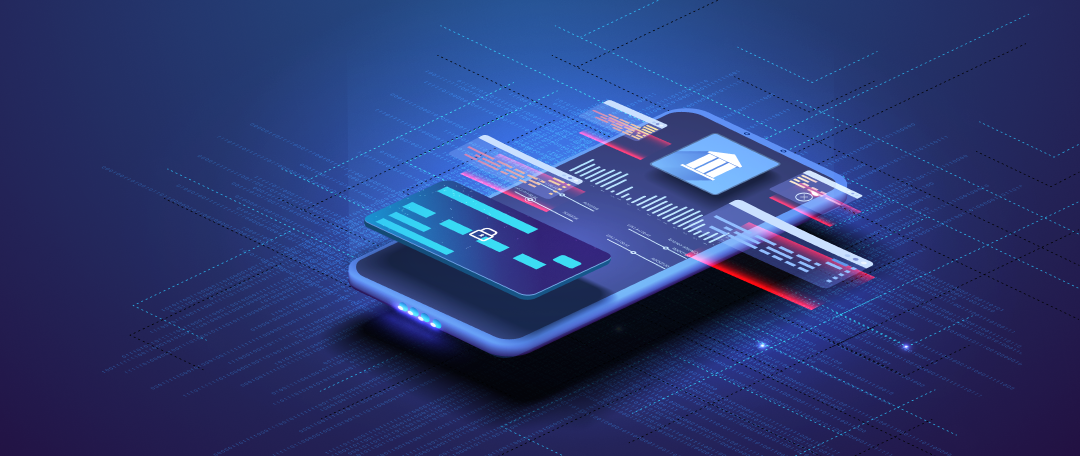Digital Twin technology represents a groundbreaking convergence of the physical and digital worlds. This technology has originated from the fields of aerospace and manufacturing and has now entered the financial services industry. By enabling an enhanced level of analysis, simulation, and real-time decision-making, digital twin technology is all set to transform how financial services will approach risk management, fraud detection, and customer experiences.
What are the use cases of digital twins in financial services, and how can they catalyze the growth of the fintech sector? Let’s find out.
Digital twin technology: Meaning, benefits, and use cases
Digital twins are virtual replicas of physical systems or properties. They are an integrated system of hardware and software that bridges the gap between the physical and digital world by mimicking real-world systems, processes, and machines.
Utilizing technologies such as artificial intelligence (AI), big data, the Internet of Things (IoT), and graph networks, there are numerous benefits of Digital Twin technology. The most significant benefits include:
- Monitoring operations and properties remotely
- Predicting equipment failures
- Performing A/B testing
- Taking corrective action at the right time
Financial digital twins or FinTwins can assist banks, financial institutions (FIs), and insurance (BFSI) companies to pace up their digital transformation efforts and processes through the following benefits:
- Enhanced risk management and regulatory compliance
- Improved customer personalization and engagement
- Increased operational efficiency and cost reduction
- Faster innovation and development of new products and services
- Data-driven decision-making for better financial outcomes
Digital twins in fintech: Use cases and implementation
Use cases of FinTwins
Risk management
Digital twins can analyze vast datasets, including the financial history of users and their digital footprints. Through this analysis, they can create more accurate and personalized credit risk assessments, leading to better lending decisions.
Fraud detection and prevention
Real-time analysis of transactions and behavior patterns can identify fraudulent activities with greater accuracy, protecting both institutions and customers from financial losses.
Regulatory compliance
Digital twins can automate compliance reporting by simulating the impact of regulatory changes on financial models and processes. This in turn will help ensure adherence to compliance regulations.
Personalized financial products and services
Upon analyzing customer data and preferences, digital twins can help recommend tailored financial products, insurance plans, and investment strategies. As a result, the technology can assist in enhancing overall customer satisfaction and loyalty.
Enhanced customer experience
Interactive, personalized dashboards and simulations help customers better understand their financial situation and make informed decisions. This fosters deeper engagement with their finances. Moreover, Digital Twins can anticipate customer needs and proactively suggest solutions, thereby offering personalized support and preventing potential issues.
Scenario planning and stress testing
Digital twins can simulate various financial scenarios and market conditions. As such, institutions can test the resilience of their systems and optimize their strategies for future events.
Data-driven decision-making
Real-time access to comprehensive data and insights enables informed decision-making across all levels of the organization, from product development to resource allocation.
Developing and optimizing financial products
In a virtual environment, digital twins in financial services can be used to prototype and test new financial products and services, including those in embedded finance. This will reduce the time it takes to develop a product and reduce the potential risks associated with it.
Collaboration and co-creation
Digital twins can facilitate collaboration between financial institutions and fintech companies to develop innovative solutions and address emerging market needs.
Implementing FinTwin technology
Deployment of a digital financial twin goes beyond technological changes. Firstly, it requires an ERP system along with necessary non-technical adjustments. These adjustments include aligning with accounting standards and processes and adjusting downstream consolidation and reporting processes. This shifts control of data from IT to finance, letting go of legacy systems, and making a long-term commitment to transformation.
Financial digital twins will continue to disrupt the banking and financial services industry
By providing access to real-time insights into financial operations, digital twins help BFSIs in improving proceses, enabling autonomous finance, and improving strategic decision-making. Not only is this a growing necessity in the current data-driven financial landscape, but it will also lead to:
- Optimized resource allocation
- Improved collaboration between departments
- An enhancement in risk management practices
However, since the technology is still in its infancy, BFSIs considering building a Digital Twin should understand the risks and challenges associated with the technology and entrust the development process to a vetted technology solutions provider possessing ample expertise in FinTwins.


